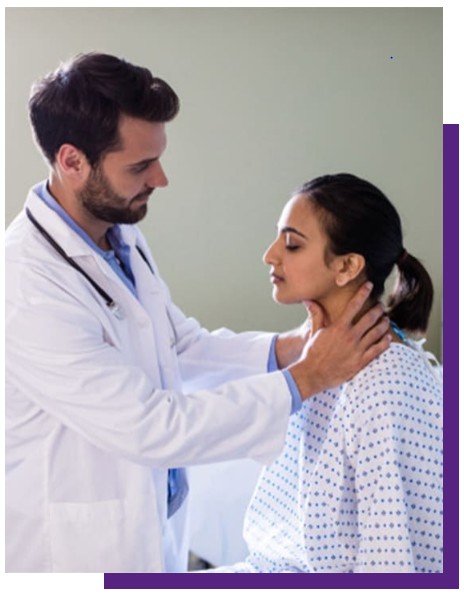Slipped Disc Treatment in Gurgaon
Slip disc is a layman term people use for “Disc Bulge” or “Herniation”. Our Spine consist of 33 vertebraes (bone stacks of one bone over the other). In between each vertebrae (bone segment) there is a space in which a structure k/a disc is present. It consist of inner gel like material (nucleus pulposus) which is embedded in outer fibers (annulus fibrosis). It acts like a shock absorber in various activities like running, jumping , ascending descending stairs, walking etc. and prevents rubbing of bones together and thereby preventing wear and tear of bony surfaces k/a arthritis and in spine we call it as spondylosis.
- Weakness in the core back muscles put more strain on your disc resulting in bulging out.
- Poor posture- sitting, standing, sleeping, lifting deactivates your core muscles overtime resulting in disc bulge.
- Lifting of heavy objects/ weights in an incorrect manner may result in disc bulge.
- Combined movement of Bending and twisting the back.
- Any sort of injury/fall on the back.
- Inactivity and sedentary lifestyle.
- Continuous or intermittent pain in the back.
- Stiffness and spasm usually surrounding the belt region and exactly at the junction where you sit.
- Early morning stiffness.
- Limited movements of the back.
- Tiredness in lower limbs and feeling of weakness.
- Inability to maintain a particular posture for prolonged period of time.
- Strenuous activity/overwork results in aggravation of pain.
- Rest usually relieves the symptoms and it increases as you start bearing weight on your back (can be your own body weight)
- May or maynot be associated with Sciatica.
- X-ray: Gives us an idea of reduced disc space and we can suspect a disc bulge there. The clinical symptoms are corelated with the physical finding then.
- MRI: though not always reliable but gives us a complete picture of disc bulge, herniations and nerve compression.
- Physical Examination- Further confirms the diagnosis.
- Gentle stretches helps in maintaining flexibility of the spine.
- Initially If there are long travels by road then Lumbar belt is advisable only while travelling.
- Release of the paraspinal muscles by IASTM, manual therapy, cupping therapy etc.
- For pain management- Ultrasonic therapy, Interferential therapy, TENS modalities can be used.
- Daily Hot and cold packs (whatever suits you)twice or thrice a day helps in managing spasm, stiffness and pain.
- Once the pain settles a bit than strength training of the core muscles has to be started to treat the problem from the root!
- Lower limb strength training is initiated.
- Spinal decompression therapy is the top most therapy of choice in such cases the disc bulge is prominent and is causing nerve compression with Sciatica like symptoms.
- If the pain and radiation limits you from standing or walking for more than 5 -10 min than your doctor may recommend taking Gaba, pain killers and muscle relaxants etc.
- Sciatica usually responds well to conservative management and only 5-10% of people require surgery.
How do i know if i had a slip disc?
You probably have a slip disc in case you have one or more of following symptoms:
- Continuous discomfort and pain.
- Pain radiating to your extremities.
- Tenderness in the affected area.
- Numbness and tingling.
- Problem in bending or straightening the spine.
Which Specialist can help a slip disc?
Specialists who offer nonsurgical treatments for slip disc include: Your Family Doctors, Orthopaedist, Physiotherapists, Chiropractors, Rheumatologists.
Do i need surgery for slip disc?
Fortunately, the majority of slip disc do not require surgery. With time, the symptoms of sciatica/radiculopathy improve in approximately 9 out of 10 people. The time to improve varies, ranging from a few days to a few weeks or even months. Continuous postural care, activity modifications, strengthening of the core muscles of the back, stretches and some set of exercises suiting your condition are key to solve the problem.
Leave your details for a callback
After we get some information from you, we’ll set up a time to discuss your issues in further detail.
For anything Orthopaedic, reach an
Orthocure Clinic near you
Our 4 Point protocols and international medical equipment helps us in bringing accuracy and rectifying your problem with our regular exercise plans without any surgery. Consult the best Orthopaedics supported by experienced Physiotherapists and a Chiropractor for your bone and muscle conditions.

Our unique 4 point protocol allows for an all round approach.
We start with the right diagnostics, and then proceed to initial pain relief and structural corrections to treat the condition of the root cause of the ailment.

